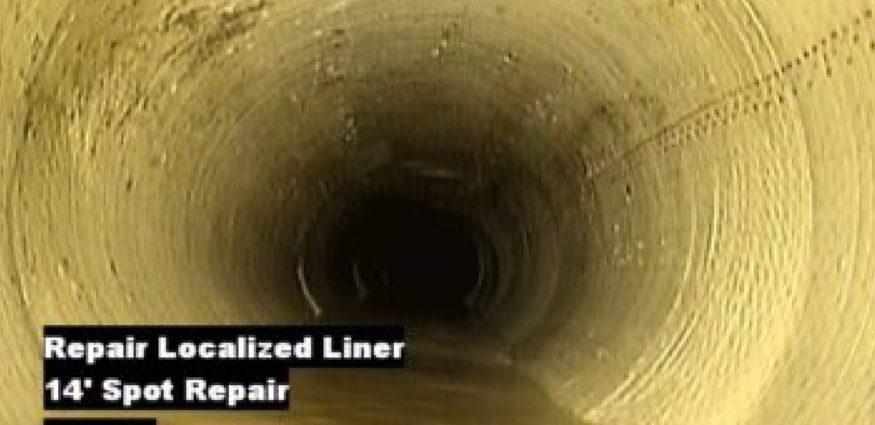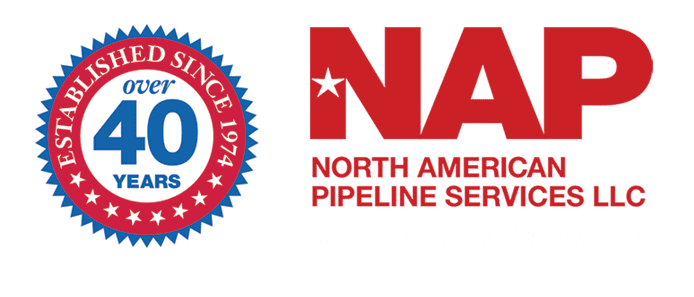What is Trenchless Sewer Repair?
Trenchless sewer repair is a less invasive repair technique for fixing common buried sewer line problems. Unlike traditional open excavation repairs, trenchless repairs don’t require messy and disruptive excavation to address broken or cracked underground sewer lines.
Common sewer line issues fixed by Trenchless Sewer Line Repair:
- Cracked clay, lead, cast iron, or plastic underground sewer lines
- Corrosion, rust, and deterioration of underground pipes
- Broken sewer lines caused by shifting soil and settling
- Damage caused by tree roots and other vegetation
- Deterioration and aging of underground lines
Is Trenchless Sewer Repair Cheaper than Open Excavation Repairs?
Digging required by traditional open excavation repairs may damage, destroy, or disrupt existing landscaping, driveways, and structures situated above or near the damaged sewer lines. Oftentimes due to it’s disruptive nature, excavation is a costly and impractical solution for home and business owners undertaking sewer line repairs.
Trenchless Sewer Repairs typically involve a minimal amount of digging and is considered a far less invasive approach to sewer line repairs. The upfront cost of traditional and trenchless sewer repair can be comparable, while the disruptive nature of traditional open excavation can add additional costs on the back end of the project in the form of repairs to disrupted landscaping, concrete, driveway, and surrounding areas.
How Does Trenchless Sewer Repair Work?
Before work can begin on repairing a broken or cracked sewer line, video inspection must be completed on the existing pipeline to determine the extent of damage, and the length of the sewer line in question. To complete the video inspection, a small specialized camera is snaked through the pipeline, giving the operator a bird’s eye view of the damaged pipeline.
Once the inspection work is complete, we use a variety of trenchless sewer repair technologies to address the underlying sewer line issues.
Lateral Pipe Lining or Cured in Place Pipe (CIPP)
Once clear of debris, a felt liner is impregnated (wetted-out) with a two-part resin that hardens (cures) within two hours after the liner is blown through the existing pipe. The result is a new pipeline within the existing damaged sewer line.
While the host pipe loses a small amount of diameter, the flow speed is actually increased due to the smooth, seamless liner material.
Pipe Bursting
Another common trenchless repair technique is to utilize pipe bursting technology to completely remove the existing damaged sewer line. This technique uses a specialized hydraulic head to break up and remove the existing damaged sewer line. Once all of the debris is removed, a new clean pipeline is snaked in place of the broken sewer line.
UV- and Ambient-Cure Spot Repairs
UV- and ambient-cure cure spot repairs are a quick and practical fix for section repairs where open excavation or other solutions prove challenging or more costly. When one or several adjoining pipe sections begin to deteriorate (cracking, fracturing, root growth, water infiltration, offsetting or separating joints, etc.), a UV- or ambient-cure spot liner eliminates the need for traditional “dig and replace” repairs.
Mechanical Joint Seals & Sleeves
Typically used to repair cracked sections of cast iron pipe without disrupting or bypassing flow, mechanical sleeves are placed around the damaged pipe and secured in place. The sleeves offer relief from leaks caused by pipe cracking, damaged bells and joint issues.
Manhole & Catch Basin Relining
NAP is a partner of Quadex Lining Systems, a member of the Vortex Infrastructure family, and proudly applies GeoKrete Geopolymer Repair Mortar and Quad-Plug Cement Mix to manholes and catch basins in need of rehabilitation. By using the industry’s most advanced blend of sustainable materials, Quadex provides corrosion resistance, adds structural integrity and stops groundwater infiltration.
Grout Injection of Manholes, Mains and Laterals
Grouting is a widely practiced chemical application that yields an impermeable, flexible gel designed to seal soil and groundwater infiltration. There are four areas where infiltration — which can cause severe problems within a sewer system — typically occurs: lateral joints, lateral-to-main connections, mainline joints and manholes. Sewer lines and manholes are tested and sealed in order to verify leaks and soil have stopped entering the system.
Lateral-to-Main Connect Utilizing UV Technology
Often house lateral connections are improperly tied into mainline sewers at the street, and the point where the lateral and mainline meet can be a source of groundwater and soil infiltration. Resembling a “top hat” once installed, the lateral-to-mainline connection repair — combined with grouting and lateral lining — can eliminate infiltration while ensuring a proper lateral-to-main connection fitting and guaranteed functionality for decades.
How Long Does Trenchless Sewer Repair Take?
How long it takes to repair a broken or damaged sewer line will vary greatly depending upon your individual circumstances and the requirements of your pipeline repair project. Unfortunately there is no one-size-fits all answer to this question.
Traditional excavation based repairs require large sections of the yard to be dug up to access broken underground pipes. This part of the process alone can take a day or more to complete. Once the repair work is completed, additional time and money must be spent dealing with the impact of excavating the damaged sewer lines.
Due to the far less invasive nature of trenchless sewer repair, it typically takes less time to repair broken sewer lines using this technique.


